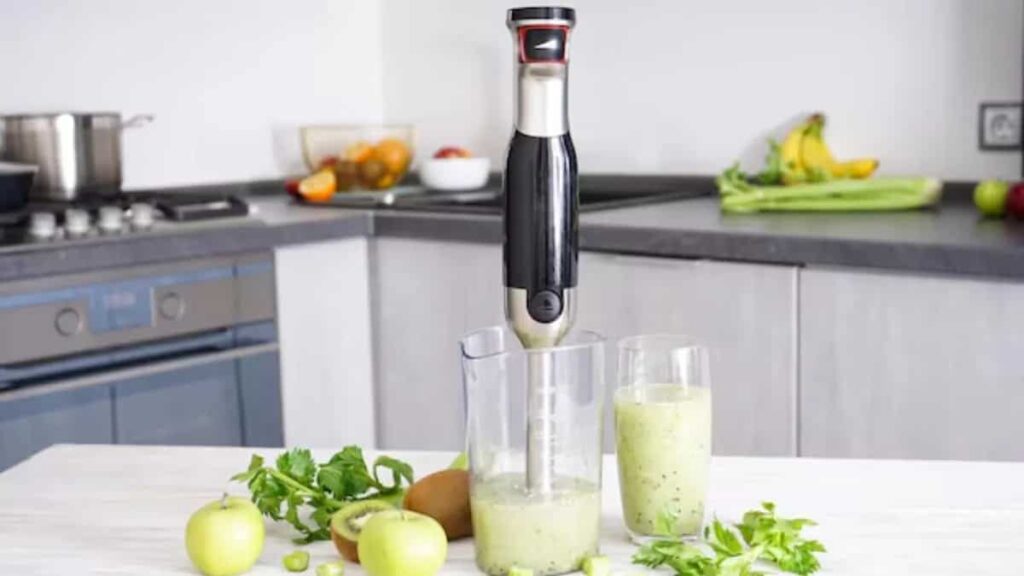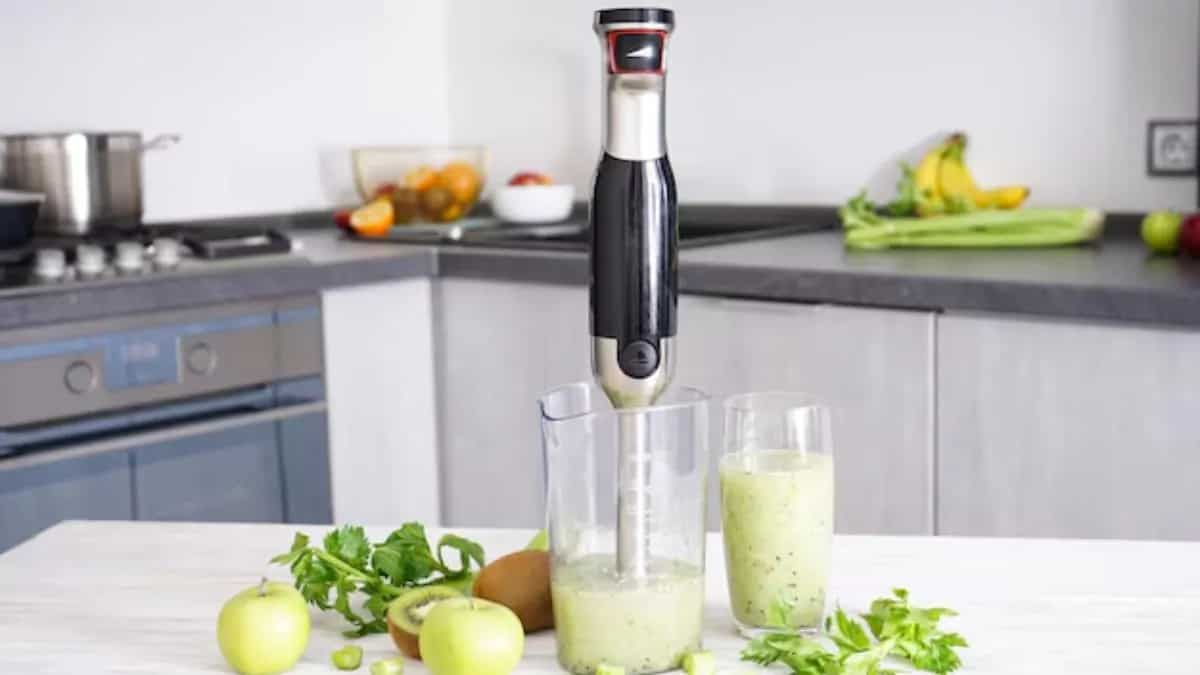
Immersion Blender vs. Blender: Which Kitchen Tool Reigns Supreme?
The kitchen is a battlefield of appliances, each vying for counter space and culinary dominance. Among the most versatile contenders are the immersion blender and the countertop blender. Both promise smooth textures and effortless blending, but their strengths and weaknesses differ significantly. Choosing between an immersion blender and a traditional blender depends heavily on your cooking style, kitchen size, and specific needs. This article dives deep into the immersion blender vs blender debate, providing a comprehensive comparison to help you make the right choice.
Understanding the Basics: Immersion Blenders and Blenders
What is an Immersion Blender?
An immersion blender, also known as a stick blender or hand blender, is a handheld device featuring a motor connected to a blending blade at the end of a long shaft. Its primary advantage lies in its portability and direct application. Instead of transferring ingredients to a separate container, you can blend directly in pots, bowls, or even glasses. This makes it ideal for pureeing soups in the pot, whipping cream in a bowl, or making smoothies directly in your travel mug.
What is a Blender?
A blender, on the other hand, is a stationary appliance consisting of a motor base and a blending jar. Ingredients are placed inside the jar, which is then secured onto the base. The motor powers blades at the bottom of the jar, creating a vortex that blends the contents. Blenders are generally more powerful and versatile than immersion blenders, capable of handling larger quantities and tougher ingredients.
Immersion Blender vs Blender: A Detailed Comparison
Let’s break down the key differences between these two blending powerhouses:
Power and Performance
Blenders typically boast higher wattage motors, translating to superior power for crushing ice, blending frozen fruits, and processing tough vegetables. They excel at creating consistently smooth textures, especially with larger batches. Immersion blenders, while convenient, often lack the raw power of their countertop counterparts. They can struggle with ice and very thick mixtures, sometimes requiring more effort to achieve a truly smooth result. However, high-end immersion blenders are closing the gap in terms of power. For smoothies, both the immersion blender and regular blender will work well.
Versatility
Blenders often come with a variety of settings and pre-programmed functions, such as ice crushing, smoothie making, and even self-cleaning cycles. Some high-end models can even heat soups or knead dough. Immersion blenders are generally more limited in their functionality, focusing primarily on blending and pureeing. However, many models come with attachments like whisks and mini-choppers, expanding their versatility. Consider what you want to make, and if you need to crush ice a lot, the blender might be better.
Convenience and Cleaning
This is where immersion blenders truly shine. Their compact size and direct blending capability make them incredibly convenient for small tasks and quick cleanups. No need to transfer ingredients or disassemble a large jar – simply rinse the blending shaft under running water. Blenders, on the other hand, require more effort to clean. Disassembling the jar, cleaning the blades, and washing the base can be time-consuming. Many modern blenders offer self-cleaning cycles, but these often require pre-rinsing and may not be entirely effective for sticky or stubborn residues.
Space and Storage
Immersion blenders are the clear winner when it comes to space-saving design. Their slim profile allows them to be easily stored in a drawer or hung on a hook. Blenders, with their bulky bases and jars, require significantly more counter or cabinet space. If you have a small kitchen, an immersion blender can be a valuable space-saving alternative.
Price
Generally, immersion blenders are more affordable than blenders. Basic models can be found for under $50, while high-end models with attachments may cost around $100-$200. Blenders range in price from around $50 for basic models to several hundred dollars for high-performance blenders with advanced features. The price difference reflects the greater power, versatility, and features typically found in blenders. The immersion blender is usually a more budget-friendly option.
The Verdict: Which is Right for You?
Choosing between an immersion blender and a blender depends on your individual needs and preferences. Here’s a quick guide to help you decide:
Choose an Immersion Blender If:
- You have limited counter space.
- You frequently make small batches of soups, sauces, or smoothies.
- You value convenience and easy cleanup.
- You’re on a budget.
- You need to blend directly in pots or bowls.
Choose a Blender If:
- You need to crush ice or blend frozen ingredients frequently.
- You make large batches of smoothies, soups, or sauces.
- You want a wider range of blending options and settings.
- You need a more powerful motor for tougher ingredients.
- You want to make nut butters or other thick mixtures.
Beyond the Basics: Advanced Considerations
While the above guidelines provide a solid starting point, there are a few more factors to consider when making your decision:
Attachments and Accessories
Many immersion blenders come with attachments like whisks, mini-choppers, and even food processors. These attachments can significantly expand the functionality of your immersion blender, making it a more versatile tool. Similarly, some blenders come with specialized jars or attachments for specific tasks like making nut butters or grinding coffee beans. Consider which attachments would be most useful to you and factor that into your decision.
Motor Power and Build Quality
Regardless of which type of blender you choose, pay attention to the motor power and build quality. A more powerful motor will be able to handle tougher ingredients and larger batches more easily. Look for models with durable construction and high-quality materials. Reading reviews and researching different brands can help you find a reliable and long-lasting blender. With either the immersion blender or a regular blender, quality is important.
Noise Level
Blenders, especially high-powered models, can be quite noisy. If noise is a concern, look for models with noise reduction features. Immersion blenders are generally quieter than blenders, but the noise level can still vary depending on the model. Consider the noise level of each appliance before making your purchase. The immersion blender can be less disruptive.
User Reviews and Ratings
Before making a final decision, be sure to read user reviews and ratings for different models. This can provide valuable insights into the real-world performance and reliability of each appliance. Pay attention to comments about power, durability, ease of use, and cleaning. User reviews can help you avoid making a costly mistake and choose a blender that meets your specific needs. A comparison of user reviews for the immersion blender and the regular blender can be very helpful.
Conclusion: Choosing the Right Blending Companion
In the battle of immersion blender vs blender, there is no clear winner. Both appliances offer unique advantages and disadvantages. The best choice depends on your individual needs, cooking style, and kitchen setup. By carefully considering the factors outlined in this article, you can choose the blending companion that will best serve your culinary adventures. Ultimately, whether you opt for the convenience of an immersion blender or the power of a traditional blender, you’ll be well-equipped to create delicious and healthy meals and beverages.
Ultimately, the decision between an immersion blender and a traditional blender is a personal one. Consider your cooking habits, kitchen space, and budget to make the best choice for your needs. Both tools can be valuable additions to any kitchen, offering unique capabilities and convenience. [See also: Best Smoothie Recipes for Blenders] [See also: How to Clean Your Blender Effectively] [See also: Top Kitchen Gadgets Every Home Cook Needs]

